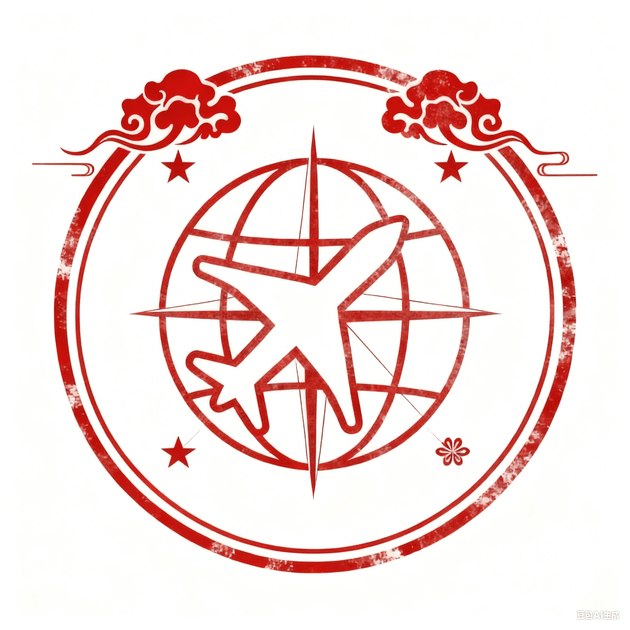
2 Days in Kaiping - A Journey Through Time and Luxury, The Diaolou and Cosmopolitan Culture of Kaipi
From $599/Person
Chapter I: Architectural Epics—The Sino-Western Diaolou Clusters
To understand the Diaolou, one must first appreciate the region’s long history of global engagement. Long before the great migration waves, the Canton System policy in the 18th century centralized all foreign trade in Guangzhou, establishing Guangdong as China’s sole gateway to the West. This centuries-old link to international commerce instilled a cosmopolitan DNA that eventually fueled the distinctive Qiaoxiang culture.
The Kaiping Diaolou are the most compelling symbols of this culture. They are not merely buildings; they are family epics written in mortar and stone, financed by the remittances of emigrants anxious to secure their families back home.(2) Built primarily between the late 19th and early 20th centuries, when political instability and rampant banditry plagued the region (1), these overseas Chinese invested their newfound wealth into erecting enduring fortresses using durable Western construction techniques.(2) This blend of defensive necessity and foreign design resulted in an architectural phenomenon that symbolized their power, wealth, and profound commitment to their lineage.(1)

Zili Village: A Pastoral Skyline
Zili Village is arguably the most photographed and classic Diaolou location, designated as one of the four key UNESCO-recognized clusters.(4) Here, a dozen watchtowers of contrasting styles stand surrealistically atop the green paddy fields, forming a breathtaking pastoral vista.(6) These structures brilliantly fuse elements like Roman columns, Baroque cupolas, and Greek porticos with traditional Lingnan residential styles.(1) A leisurely walk along the winding paths evokes a profound sense of time travel.(6)
Liyuan Garden: The Apex of Private Luxury
For a study in the pure grandeur of a Qiaoxiang private estate, look no further than Liyuan Garden (Li Garden).(2) Completed in 1936 by Xie Weili, a wealthy Chinese American immigrant, this expansive villa-garden complex is a masterpiece of artistic synergy.(2) Divided into three main zones—the Villa Area, the Grand Garden, and the Small Garden (2)—the architecture is rich with exquisite detailing, seamlessly blending Baroque, Italian Neoclassical, and traditional Chinese decorative elements.(8) Guests can pause by intricately carved screens that hint at the owner’s cosmopolitan tastes and world view.(9) Liyuan is a direct, elegant testament to the success and wealth of that era’s overseas Chinese elite.
Jinjiangli and Ruishi Lou: The Pinnacle of Clan Prestige
In Jinjiangli Village, you will find the tallest of all Kaiping Diaolou—the majestic Ruishi Lou.(4) Completed in 1921, this nine-story tower boasts a Byzantine-style roof and Roman dome, making it dramatically prominent in the rural landscape.(4) Unlike purely defensive towers, Ruishi Lou’s residential floors were designed for comfort and beauty, featuring living rooms, bedrooms, bathrooms, and kitchens.(9) The interiors showcase high-quality, traditional 19th-century Guangdong-style furniture and art.(9) Historical records note that after the three main towers here were completed, Jinjiangli was never again successfully attacked, proving their defensive efficacy.(9)
Chapter II: Culture and Wellness—Town Revival and Hot Springs Retreats
Kaiping’s allure extends beyond its fortified residences, offering high-end visitors a deep cultural experience fused with modern wellness luxuries.
Chikan Ancient Town: Echoes of the Republican Era
After careful renovation, the Chikan Overseas Chinese Ancient Town has been reborn as an international tourism resort.(11) The townscape preserves over 600 well-maintained Arcade Buildings (Qilou) stretching over 3 kilometers, creating an immersive atmosphere reminiscent of the Republican Era.(6) Visitors can indulge in a comprehensive array of services covering performing arts, dining, high-quality accommodation, and shopping.(12) You can ride a vintage tram through the town (6) and witness Intangible Cultural Heritage performances such as the vibrant Yingge Dance and Awakening Lion Youth displays.(6) Chikan aims to be a high-level, integrated new benchmark for Qiaoxiang cultural tourism.(12)
Gudou Hot Spring Town: Private Coastal Wellness
After a day of cultural exploration, nothing rivals the relaxation of a luxurious hot spring. Located in Jiangmen, Gudou Hot Spring Town boasts the rare resource of having both saline (ocean) and freshwater thermal springs.(14) For the utmost in privacy, the resort offers opulent villa suites with private hot spring pools, such as the elegantly named "Emperor Ming Pool" and "Guifei Pool" suites.(15) The Dragon Spring Suite is particularly noteworthy: a luxury villa featuring an outdoor hot spring pool beneath a waterfall, a karaoke lounge, a mahjong room, and dedicated butler service, making it ideal for exclusive gatherings.(15) Submerging yourself in the 88°C deep-sea spring water, rich in minerals, is a private and deeply rejuvenating experience.(16)
Chapter III: Culinary Journeys—Savouring High-End Cantonese
The cuisine of the Qiaoxiang region is a splendid chapter in the broader Cantonese culinary canon, marked by distinctive local specialties.
Magang Roast Goose: Farm-to-Table Excellence
A visit to Kaiping is incomplete without sampling the famed Magang Roast Goose.(17) At top-tier Cantonese establishments, often themed around the "Goose City" concept, the service of the roast goose can be a ceremonial experience.(17) Only geese with a traceability code, selected for their quality and roasted to perfection, are served.(18) The goose skin shatters like a cracker, releasing rich, savory juices upon the first bite.(18) Some fine-dining venues offer unique settings, such as dining on a traditional boat (17), further immersing you in the local cultural ambiance. Also highly recommended is the jasmine-smoked goose leg, where the crispy skin gives way to the subtle, fragrant scent of jasmine—an unforgettable flavor profile.(18)
Eel Rice (Huangshan Fan): The Taste Signature of Kaiping
Kaiping's Eel Rice rivals the roast goose in local fame.(20) Top restaurants specializing in this dish often ensure extreme freshness, sometimes featuring their own internal fish ponds.(21) The eel meat is tender, and the rice absorbs the savory Cantonese seasonings, creating a rich flavor profile. The essential element is the crispy, charred crust at the bottom of the clay pot, known as guoba, offering a tantalizing texture that blends perfectly with the wok hei (breath of the wok).(20)
Local Delicacies and Sweets
Don't overlook the local street food and traditional snacks. Try Magang Lai Fen (rice noodles), a smooth, traditional delicacy best enjoyed alongside the roast goose.(17) For a sweet treat or souvenir, local bakeries offer traditional Guangfu pastries like "Wife Cakes" and "Chicken Cakes," perfect for an afternoon snack.(17)
Chapter IV: Luxury Stays and Seamless Travel
To ensure your journey is as smooth and comfortable as it is insightful, Kaiping offers excellent high-end accommodation and efficient travel options.
Boutique Accommodation
Near the core Diaolou scenic areas, highly-rated boutique guesthouses like the Floral Lux Hotel · Fifty-third Degree Zhuxia Hotel or Yixi Hotel offer unique design aesthetics and high service standards.(22) Alternatively, staying within the meticulously restored 赤坎华侨古镇 (Chikan Overseas Chinese Ancient Town) allows for an immersive, multi-day experience.(23) For modern city luxury, hotels like the Pantower International Hotel in the urban center provide convenient facilities and quality service.(24)
Efficient Transportation
Given that the Diaolou are scattered across the countryside, prioritizing efficiency is key for the high-end traveler. It is highly recommended to arrange a private car or luxury chauffeured service from Guangzhou (25) or book a dedicated private day tour with a professional guide/driver.(26) This ensures you can seamlessly explore every scattered architectural gem without the inconvenience of public transit.(27)
Chapter V: Beyond Kaiping: The Diverse Allure of Jiangmen Culture
Jiangmen is the central hub of the "Five Counties" (Wuyi) Qiaoxiang region. For those wishing to deepen their exploration of Guangdong culture, the following neighboring areas offer distinct charms:
Xinhui District—Guifeng Mountain and Bird Paradise:
Guifeng Mountain National Forest Park is a majestic natural landmark, known for its peak that resembles a jade tablet (Gui). It offers scenic hiking and panoramic views of the Lingnan landscape.
Xinhui is also home to the famous "Bird Paradise", an ecological wonder where a massive ancient banyan tree shelters tens of thousands of migratory birds—a must-see for nature enthusiasts.
Taishan—Ancient Qiaoxiang Charm:
Taishan, another key Qiaoxiang county, offers a look at traditional overseas Chinese culture and architecture. Attractions like the Taishan Museum provide further insight into the emigrant history. The district is cherished for its simple, traditional Cantonese rural atmosphere.
Chapter VI: The Rhythm of Qiaoxiang Life and the City's Pulse
To truly connect with the region, international visitors should embrace the local lifestyle and tempo. Jiangmen, particularly Kaiping, operates on a distinctly "slow" pace, a refreshing contrast to the high-velocity metropolises of Shenzhen or Guangzhou.
The Idyllic Pace of Life: The Diaolou are nestled in quiet rice fields, where life is governed by a rhythm of tranquility. You'll see farmers working in the fields in the morning and elderly residents enjoying the shade near the ancestral halls in the afternoon. This quiet, almost "hidden gem" serenity offers a profound retreat from the fast-paced modern world.
The Culture of "Savoring Morning Tea": Daily life is deeply rooted in Cantonese tradition. Experiencing an authentic "Savoring Morning Tea" (Tan Zao Cha) at a local tea house is essential. This is the ritualistic, slow start to the day, where families gather to enjoy refined dim sum and hot tea, epitomizing the local focus on food and family balance.
The Spirit of Peasant Cosmopolitanism: Kaiping's identity as a Qiaoxiang has imbued its people with an innate openness. Their aesthetic choices (visible in the eclectic Diaolou) and their philosophy (the deep-seated connection to home) reflect a unique "peasant cosmopolitanism".(1) This cultural confidence and blend ensure that international guests feel a distinctive sense of welcoming sophistication, rooted in tradition but looking out at the world.
Kaiping, a homeland rich with compelling stories, awaits the international traveler ready to uncover its unique architectural heritage, deep historical currents, and the refined, slow-paced charm of its Cantonese life. This is not merely a trip; it is a profound journey into the heart of a civilization that looked outward while cementing its roots forever at home.


